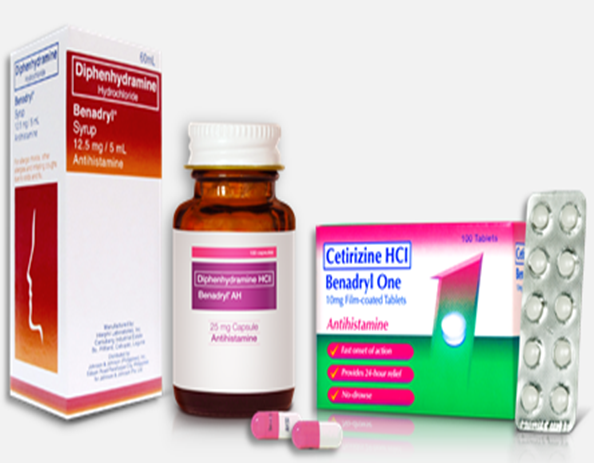

Causes of Food Allergies
Have diarrhea or indigestion? Consider yourself lucky. For people who are allergic to certain types of food, one small mistake can mean an entire day of swollen tissues, vomiting, abdominal cramps, painful blisters, difficulty breathing, and in worse cases, coma and death.

Causes of Food Allergies
Have diarrhea or indigestion? Consider yourself lucky. For people who are allergic to certain types of food, one small mistake can mean an entire day of swollen tissues, vomiting, abdominal cramps, painful blisters, difficulty breathing, and in worse cases, coma and death.
Wheat
Wheat can be found in a variety of foods including breads, cereals and pizza, even in ketchup and ice cream. It cause dermatitis to swollen airways and anaphylaxis.
Eggs
Eggs are the leading cause of eczema (a type of skin allergy) attacks in children. The primary trigger is the protein in egg white, although allergies to yolk is not uncommon. Although most of these kids outgrow their egg sensitivity by age five, it’s important to note that severe egg allergies can cause hives, difficulty of breathing and sometimes even shock. So it’s better to skip eggs altogether, and food items made with eggs, like baked products, salad dressings, and desserts.
Shellfish
Shellfish are responsible for some of the scariest allergic reactions, right up there with peanuts, tree nuts, wheat and egg. Crustaceans (crabs and shrimps) and mollusks (mussels, clams and similar seafood) can be just as harmful when consumed by an allergic individual.
Tree nuts
Tree nuts are the main cause of anaphylactic reactions among all food allergies. They include almonds, pistachios, Brazilian nuts, walnuts, cashews and hazelnuts, and are used either as garnish or a main ingredient in rice, dressings, honey, burgers, barbecue sauce, pasta and pancakes.
Fish
Fish allergies remain for life for affected individuals, mostly adults. Symptoms can range from itching and dermatitis to difficulty in breathing. Fish can also be found in dressings and sauces, like Worcestershire and BBQ sauce.
Milk
It is one of the top causes of allergies in children, although many become desensitized by age three. It is also the leading cause of food allergies from undeclared or unknown causes, because it’s integrated into almost every dish and food product in the market that it’s almost impossible to distinguish what food has it and what doesn’t. Cow’s milk is the leading cause of milk allergies, but milk from other farm animals like goat and sheep can also lead to reactions, like hives, vomiting and other digestive problems within minutes to hours of consumption.
Peanuts
While some peanut allergy symptoms run mild (runny nose and rashes), reactions can also be as frightening as airway obstruction and collapse. This tiny legume is one of the top causes of severe allergic reactions both in kids and adults, and even residual amounts can send one off straight to the ER. People who are extremely allergic can develop life-threatening symptoms simply with a sniff of peanut dust or by being touched by someone who held peanuts.
Soy
Soy allergies usually affect infants and toddlers though many of them outgrow it by age two. Soy-based food and food products including miso, soy sauce, soy milk and some baked goodies must be avoided by affected person, or they’ll experience debility, a stuffy nose, mouth sores, eye inflammation and rashes.

When Food Allergies Turn Deadly
Food can be deadly – deadlier than your usual brain-hungry zombie. A-choos and rashes are the least of your worries when it comes to food allergies. Some food allergy cases are systemic, affecting your airway and circulation thus turning the condition critical.

When Food Allergies Turn Deadly
Food can be deadly – deadlier than your usual brain-hungry zombie. A-choos and rashes are the least of your worries when it comes to food allergies. Some food allergy cases are systemic, affecting your airway and circulation thus turning the condition critical.
Preventing Anaphylactic Shock
These are reactions that occur when body overreacts to a substance and treats it as foreign, thus producing inflammatory symptoms in an attempt to localize the offending allergen. In the Philippines, the incidence tend to be underreported. About 10-20% of cases don’t present overt skin symptoms that are common and expected of allergies such as hives and itching. As a result, symptoms are sometimes misdiagnosed and sufferers may not realize the severity of the situation till it’s too late. If you have food allergy, it would be helpful to know what can be done in such life-threatening scenarios to prevent complications.
Be vocal about your allergies.
It’s wise to let people know of your allergies, particularly if it concerns food. It will help them quickly carry out live-saving measures if an attack occurs and you are unable to care for yourself.
Cook and pack your own.
Going on a vacation? If you’re unsure what the menu is, it’s safer to prepare your own meals and pack some for the trip. When going to a small gathering, be sure to inform your host of your allergies beforehand. You may also offer to take along with you a dish you’re not allergic to and share it with the host and the guests. It wouldn’t be rude to be honest.
When in doubt, ask.
Whether you’re attending a function or eating at a restaurant, it should be part of your routine to inquire about how a dish is prepared. Note that in severely allergic individuals, even trace amounts of allergens can cause attacks.
Scan the label.
When purchasing canned or packed food products, read through the components specified on the food label. Purveyors and companies are required to state all food ingredients for a reason. If the packaging doesn’t have a label, better buy something else.
Swipe all surfaces before touching them.
In individuals suffering from severe allergies, even mere skin contact with a known food allergen can trigger an attack. Be sure to wipe clean all surfaces with wet wipes, including chairs and table to rid any possible allergen.
Bring anti-allergy medications at all-times.
Anti-allergy medicines should be first-line defense. As a rule for allergy attacks, always have an antihistamine packed wherever you go. It blocks allergy symptom-causing histamines in the body, and are therefore essential in preventing the attack from escalating. Benadryl is there for you, with Diphenhydramine Benadryl® AH for restful allergy relief and Cetirizine Benadryl® One for hi-speed recovery.
If you or a family member has a history of severe allergic reactions, it’s always better to discuss treatment options with your physician. Your doctor will probably suggest an epinephrine kit which you can use in emergencies. In individuals who are suspected to have anaphylactic reactions, time is of essence, and without any hesitation, an emergency consult is warranted.


